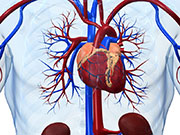Association seen in lean adolescents, obese adolescents with T2DM, but not normoglycemic teens
MONDAY, June 8, 2015 (HealthDay News) — In lean adolescents and in obese adolescents with type 2 diabetes (T2DM), but not obese adolescents with normoglycemia, 25-hydroxyvitamin D (25[OH]D) is inversely associated with some measures of arterial stiffness, according to a study published online May 26 in Diabetes Care.
Pranati Jha, M.B.B.S., from the Cincinnati Children’s Hospital Medical Center and University of Cincinnati, and colleagues conducted a cross-sectional analysis to examine the correlation between 25(OH)D levels and arterial stiffness in obese youth with and without T2DM. Data were included for 190 youth with T2DM, 190 obese control subjects without T2DM, and 190 lean control subjects without T2DM (mean age, 17.9 ± 3.4 years).
The researchers found that for lean individuals, obese individuals, and obese individuals with T2DM, the mean 25(OH)D levels were 21.27, 14.29, and 14.13 ng/mL, respectively (P < 0.01). From lean to obese to T2DM, pulse wave velocity (PWV), augmentation index (AIx), and brachial distensibility worsened (P < 0.01). 25(OH)D level correlated independently with PWV in lean individuals and with AIx in the group with T2DM; a 3 ng/mL increase in 25(OH)D correlated with a 1 percent decrease in AIx.
“25(OH)D is inversely associated with some measures of arterial stiffness in lean adolescents and obese adolescents with T2DM but not in obese normoglycemic adolescents,” the authors write. “Future studies are needed to determine if supplemental 25(OH)D is important for cardiovascular health.”
Copyright © 2015 HealthDay. All rights reserved.








